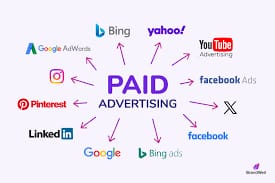
Paid advertisements are a type of promotional content that businesses or individuals pay to display across various media channels—such as social media, websites, search engines, TV, radio, and print. The purpose of paid advertising is to increase brand awareness, drive traffic, generate leads, and ultimately boost sales by reaching a specific target audience. Unlike organic content, paid ads give advertisers control over who sees the message and how frequently, allowing for precise audience targeting and measurable results.
What is Paid Advertisement ?
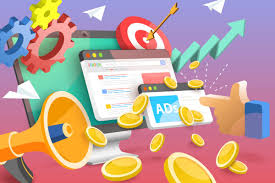
Paid advertisement/advertising is an online advertising model where advertisers bid to participate in real-time auctions in order to show their ads within slots on a specific platform or network. For example, in this search on patio furniture you can see both shopping ads and text ads. Paid advertising is an online advertising model where advertisers bid to participate in real-time auctions in order to show their ads within slots on a specific platform or network.
For example, in this search on patio furniture you can see both shopping ads and text ads.Paid advertising is an online advertising model where advertisers bid to participate in real-time auctions in order to show their ads within slots on a specific platform or network. For example, in this search on patio furniture you can see both shopping ads and text ads.
It is also sometimes called biddable media or PPC advertising. PPC stands for Pay-Per-Click advertising as you usually pay every time someone clicks on your ads. This model is usually opposed to earned or owned advertising where you can use a platform to push your content for free i.e. Facebook or LinkedIn posts.
Overview of Paid Advertisement
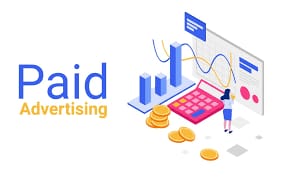
Paid advertising involves purchasing ad space or visibility on media platforms to display promotional messages to specific audiences. This process is designed to capture potential customers’ attention and encourage them to engage with the advertised product or service. Paid ads appear across various mediums, such as television, radio, newspapers, websites, and social media platforms.
Unlike organic advertising, which is unpaid and relies on search engine optimization (SEO) or social media engagement, paid advertising offers immediate visibility in exchange for a fee.
The purpose of paid advertising can range from increasing brand awareness and driving website traffic to generating leads and boosting sales. By paying for exposure, businesses are able to bypass natural competition, gaining direct access to an audience.
The History of Online Paid Advertising
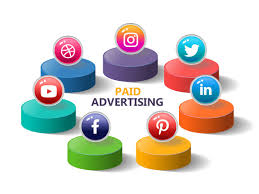
Online paid advertising started in 1994 when the first banner ad appeared on the digital publication HotWired, part of Wired magazine. They needed a way to generate revenue and used the traditional method of selling ad slots within their magazine pages. This model was literally transposed to online and publishers would ask for an upfront fee to place ads within specific slots for a given amount of time.
Banner ads took over the internet and in 1996, Doubleclick, now part of Google, emerged to give advertisers more data about their performance. This revolutionised the market as you could see the data live and optimise accordingly instead of having to wait for the campaign to be over to make changes.
This new tool led to a new pricing model based on cost per impression (CPM) instead of paying a flat fee for the ad space.
In 1999, the emerging search engine GoTo.com decided to monetise their search results by creating an auction system where advertisers could bid on keywords to show their ads in search results. Paid Search Advertising was born! This quickly deteriorated the quality of search results though as some advertisers were willing to pay to show on irrelevant searches.
That’s when Google introduced AdWords in 2000 with an auction system based on bid amount and quality score to ensure that their search results would stay relevant and provide high quality responses to users whilst making them money. This system is still in place today although much more sophisticated.
In 2006, Facebook joined the party to increase their profitability and launched hyper targeted ads based on the plethora of data they were collecting on users. This opened up a lot of targeting possibilities for advertisers and other platforms like Twitter and LinkedIn soon followed.
Today, the world of online advertising has been taken over by machine learning to help advertisers focus on strategy and creativity whilst the machine takes care of data collection, analysis and optimisation. Ads can be hyper targeted and super relevant; however, people tend to use ad and cookie blocker tools which make reaching your audience online more challenging. This shows there’s an increased need for helpful and sincere content rather than intrusive ads.
Read more about the history of online advertising and paid search advertising.
The Rise of Paid(Digital) Advertising
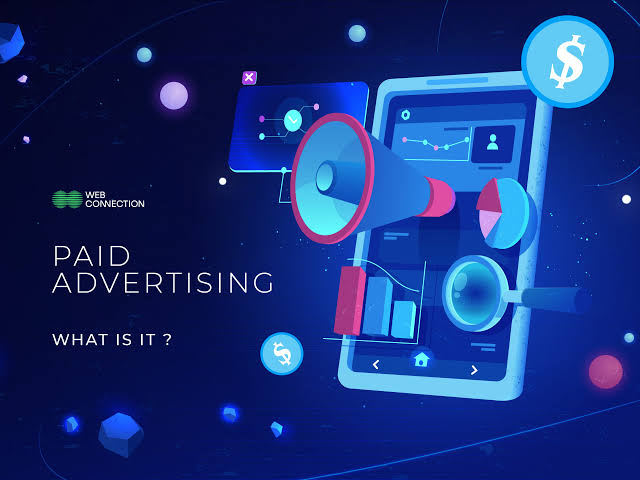
With the rise of the internet, digital advertising has transformed how businesses promote themselves. Digital advertising can be broadly divided into the following types:
- Search Engine Advertising (PPC): Paid search ads, particularly pay-per-click (PPC) advertising on platforms like Google Ads, allow advertisers to bid on keywords so that their ads appear at the top of search engine results pages (SERPs). Advertisers are charged only when users click on their ads.
- Display Advertising: Display ads are visual banners or graphics that appear on websites within the Google Display Network or other ad networks. Display advertising helps build brand awareness and can be strategically placed on sites relevant to the target audience.
- Social Media Advertising: Platforms like Facebook, Instagram, Twitter, LinkedIn, and TikTok have evolved into powerful advertising channels. Social media ads allow for sophisticated targeting based on user demographics, interests, and behavior, making them ideal for engaging specific audiences.
- Native Advertising: Native ads are designed to blend in with the content of the platform they appear on, making them less intrusive. Sponsored content, for example, is a form of native advertising that looks like an article or social post, allowing brands to share messages in a more natural and engaging way.
- Video Advertising: YouTube, TikTok, and other video platforms offer opportunities for video ads, including in-stream ads that play before, during, or after videos. Video ads are engaging and can be used to demonstrate a product’s value or share a compelling brand story.
Digital advertising offers key advantages, including the ability to target specific audiences, measure performance in real-time, and adjust campaigns based on analytics. This flexibility has led to an increased focus on personalized and data-driven advertising strategies.
Evolution of Paid Advertising Strategies
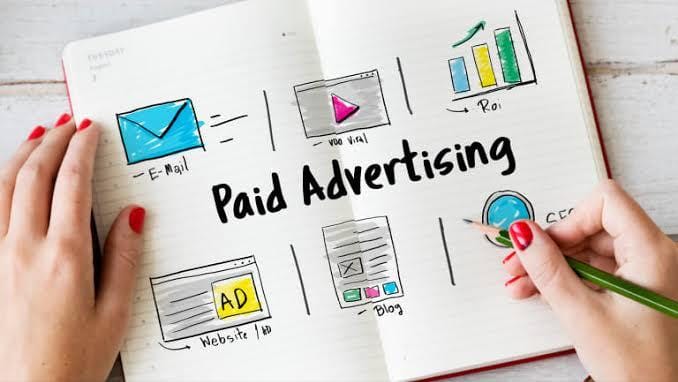
As digital technologies have advanced, so have paid advertising strategies. Advertisers now employ sophisticated approaches to maximize ad effectiveness and drive better ROI. Some current trends and strategies include:
- Data-Driven Targeting: Using data from various sources, advertisers can create detailed profiles of their target audiences, ensuring their ads are reaching those who are most likely to engage or convert. Demographic, geographic, behavioral, and psychographic data all contribute to more effective targeting.
- Personalization: Personalizing ad content based on user preferences and behavior helps improve engagement. For instance, e-commerce brands may show personalized ads based on users’ previous shopping behavior or website activity.
- Retargeting: Retargeting ads target users who have previously visited a website or interacted with a brand but did not convert. Retargeting is highly effective because it reaches users already familiar with the brand, making them more likely to convert.
- A/B Testing: A/B testing involves running multiple versions of an ad to see which one performs better. By continually testing ad elements—such as headlines, images, or calls to action—advertisers can optimize ads for the best results.
- Influencer Marketing: Partnering with influencers on social media platforms is a unique form of paid advertising. Influencers can promote a product or service to their followers, providing a more authentic approach to advertising.
How to Develop Your Paid Advertising Strategy
There’s a lot that goes into PPC advertising and you shouldn’t start your campaigns without having a strategy in place, else you could end up wasting a lot of money!
Identify Your Goals
As with everything in marketing, you need to have goals in mind before you start anything else. Who are you trying to reach? What exactly are you trying to achieve and what do you want this audience to do? What is the end result?
Different goals and audiences will need different campaign and ad types as well as different platforms. The platforms we mentioned are usually quite helpful with this as they’ll tie in specific campaigns with goals. This means that you usually start your campaign with a goal and choose the relevant options they offer you.
Goals can be categorised based on your buyer’s journey as people will need different things depending on which stage they’re at.
Source: https://blog.hubspot.com/sales/what-is-the-buyers-journey
Awareness – this is when someone is still researching and is aware that they have a problem or a need but don’t know much about it yet. The goal attached to this will be to reach more people to make them aware of your products or services. This can usually be measured by impressions – how many people saw your ads – as well as clicks – how many people were interested and clicked through to learn more. It can also be measured by engagement metrics – how many people engaged with your ad by liking a post or watching a video, etc.
Consideration – this is when someone has clearly identified their problem or need and are now in the phase of considering the options they have to solve or fulfil it. To measure this, you might still look at clicks to your website as well as what actions people took once on your site. Did they fill in a form to download a guide or navigated to other pages to learn more?
Decision – this is when someone has identified how they’ll solve their problem or fulfil their need and they’re looking for the organisation that will do just that for them. This is usually measured in terms of conversions – did they contact you or purchase from you?
Know Your Audience
It’s great to know your goal but it’s even better to know who you’re targeting. You should do some research to understand who your potential customers are. This can be done by creating personas which are semi-fictional characters that correspond to your ideal customer. You define them by understanding who they are as well as the challenges and pain points that will trigger them to buy products or services like yours.
Knowing your audience is essential to build efficient ads. It will help you understand which platforms to advertise on and which to avoid. It will also help you choose the best targeting options to reach them and you’ll be able to craft great ads that will appeal to them.
Calculate Your Budget
Now that you’ve identified your goal and your audience, you need to know how much you can spend. You might already have a specific budget that has been given to you, but you’ll need to decide where to spend it. We know most businesses don’t have endless pockets and their budgets need to be maximised for return.
The biggest mistake that most businesses make is spreading their budget too thin between platforms or campaigns. They end up being limited by their budget and don’t see any positive results. That’s why it’s best to focus on one platform or one type of targeting rather than trying everything at once. This way, you can fully commit to maximise performance. If the results end up being bad, you can move on to the next. Marketing is all about trial and error.
There are many tools out there that can give you estimates of Cost per Click (CPC) and search volumes to calculate how much advertising on specific terms might cost you. Advertising platforms will also sometimes give you an idea of the budget you’d need when you’re setting up your campaign and choosing targeting options. Although these are usually pretty vague, do pay attention to them and it will give you a broad estimate of what you can expect. However, you’ll only know how much it will cost you exactly until you start advertising.
Types of Paid Advertisement
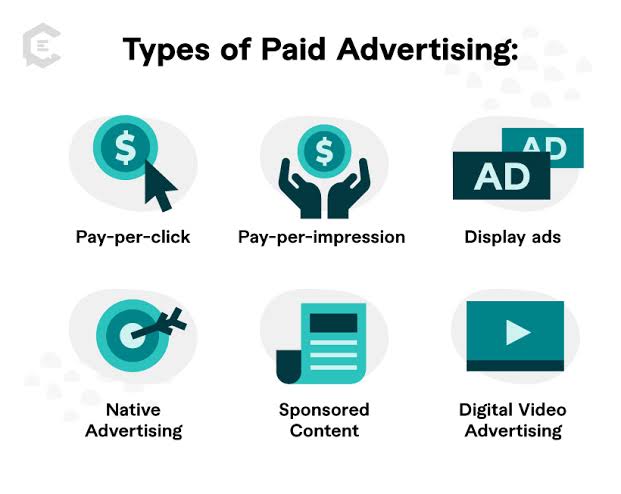
Paid advertisements come in various forms and channels, each designed to target specific audiences and marketing goals. Here’s an overview of the most common types:
1. Search Ads
- Platform: Search engines like Google and Bing.
- Description: Text-based ads appear on search engine results pages (SERPs) when users search for specific keywords. These ads typically display at the top or bottom of the results page.
- Best For: Driving traffic from users with high purchase intent.
2. Display Ads
- Platform: Websites within a display network (e.g., Google Display Network).
- Description: Visual ads, including banners, images, or videos, appear on various websites. They’re used for brand awareness and targeting audiences based on interests or browsing history.
- Best For: Building brand visibility and retargeting.
3. Social Media Ads
- Platform: Social media channels like Facebook, Instagram, Twitter, LinkedIn, and TikTok.
- Description: Ads that appear within social media feeds, stories, or sidebar sections. They can include images, videos, or carousel formats.
- Best For: Audience engagement, lead generation, and targeting specific demographics.
4. Video Ads
- Platform: YouTube, streaming platforms, and social media.
- Description: Short video advertisements that play before, during, or after video content, or in social media feeds.
- Best For: Engagement, storytelling, and reaching audiences on high-engagement platforms.
5. Native Ads
- Platform: Content-driven sites, news sites, and social media.
- Description: Ads designed to blend in with the surrounding content, making them appear less like traditional ads. They are often labeled as “sponsored content.”
- Best For: Soft selling, brand exposure, and user engagement with subtlety.
6. Affiliate Marketing
- Platform: Affiliate networks and partner websites.
- Description: Brands partner with affiliates who promote their products in exchange for a commission on conversions (clicks, leads, or sales).
- Best For: Performance-based marketing with measurable ROI.
7. Influencer Marketing
- Platform: Social media, blogs, and video platforms.
- Description: Leveraging influencers to promote a product or service to their followers, often through sponsored posts or video mentions.
- Best For: Brand awareness, credibility, and reaching niche audiences.
8. Retargeting Ads
- Platform: Display networks, social media, and search engines.
- Description: Ads targeting users who have already visited a website or engaged with the brand. These ads remind users of products they viewed or abandoned in their cart.
- Best For: Converting warm leads and increasing ROI on prior traffic.
9. Programmatic Advertising
- Platform: Various digital channels through programmatic networks (e.g., Google Ads, The Trade Desk).
- Description: Automated, data-driven ad buying using AI to optimize ad placements in real-time across websites, social media, and video.
- Best For: Scaling campaigns, targeting precision, and optimizing budgets through automation.
10. Shopping Ads
- Platform: Google Shopping, Amazon, and other eCommerce sites.
- Description: Product ads display product images, prices, and information within search engine results. Especially useful for eCommerce.
- Best For: ECommerce brands aiming to convert buyers searching for specific products.
11. Podcast Ads
- Platform: Podcast networks and channels.
- Description: Audio ads that play before, during, or after podcast episodes. These can be pre-recorded or read by the host.
- Best For: Targeting niche audiences and building brand awareness through a trusted medium.
Each type of paid advertisement has unique strengths, so selecting the right mix can depend on campaign goals, audience targeting, and budget.
Advantages of Paid Advertising
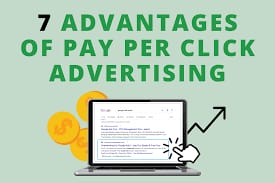
Paid advertising offers numerous benefits that contribute to its widespread adoption:
- Targeted Reach: Businesses can specify target audiences based on location, age, interests, or behavior, leading to more relevant ad placements and higher engagement rates.
- Immediate Results: Unlike organic methods, which may take time to generate traffic, paid advertising offers almost instant visibility and can drive results quickly.
- Measurable Performance: Digital advertising platforms provide detailed analytics on ad performance, including impressions, clicks, conversions, and ROI. This allows advertisers to track progress and make data-driven adjustments.
- Brand Awareness: Paid ads are useful for increasing brand visibility, even if they don’t always result in immediate conversions. Repeated exposure to ads helps reinforce brand recognition.
- Control over Budget: Advertisers can set daily or total budget limits, ensuring they do not overspend. They can also allocate budgets based on the performance of different campaigns.
Disadvantages of Paid Advertising
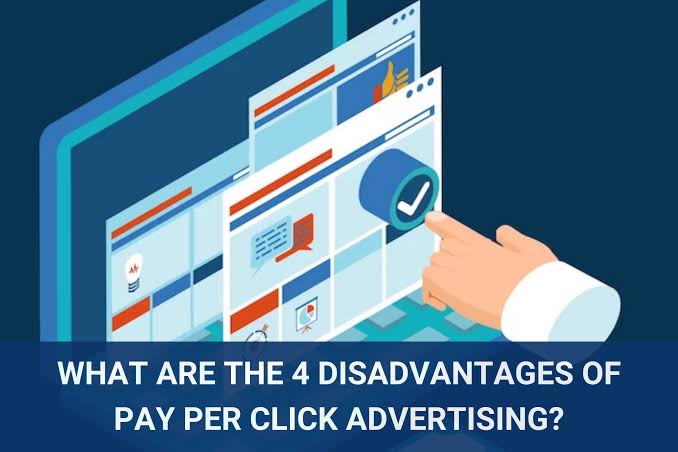
Despite its advantages, paid advertising has several drawbacks that advertisers must consider:
- Cost: Depending on the industry and competition, paid advertising can be costly, especially for small businesses with limited budgets. For example, popular keywords in PPC campaigns can require significant investment.
- Ad Fatigue: When users see the same ad repeatedly, they may become less responsive or even annoyed by it. Ad fatigue can lead to decreased engagement and may harm a brand’s image.
- Competition: In saturated markets, businesses must bid for ad placements, which can drive up costs. Competing with larger brands with bigger budgets can be challenging.
- Ad Blockers: Many users install ad-blocking software to avoid seeing ads, limiting the reach of digital ads. This is particularly an issue with display and video ads on websites.
- Privacy Concerns: As data-driven advertising has grown, so has the public’s concern over privacy. Stricter regulations like the GDPR in Europe and CCPA in California impact how advertisers collect and use data.
The Role of Analytics in Paid Advertising
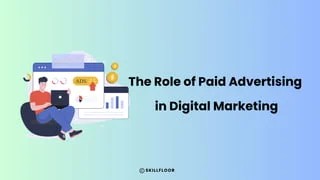
One of the greatest benefits of digital paid advertising is access to real-time data, which allows for continual optimization of campaigns. Platforms like Google Ads, Facebook Ads Manager, and LinkedIn Campaign Manager provide insights into ad performance metrics, such as:
- Impressions: The number of times an ad is shown to users.
- Click-Through Rate (CTR): The percentage of users who click on the ad after seeing it.
- Conversion Rate: The percentage of users who complete a desired action (e.g., purchase, sign-up) after clicking on the ad.
- Cost Per Click (CPC) and Cost Per Thousand Impressions (CPM): The cost associated with each click or thousand views, helping businesses understand their spending.
Analytics allows marketers to understand which aspects of their campaigns are working and which are not. They can make adjustments to targeting, budget allocation, and ad content based on data, leading to improved ROI.
The Future of Paid Advertising: Personalization and AI
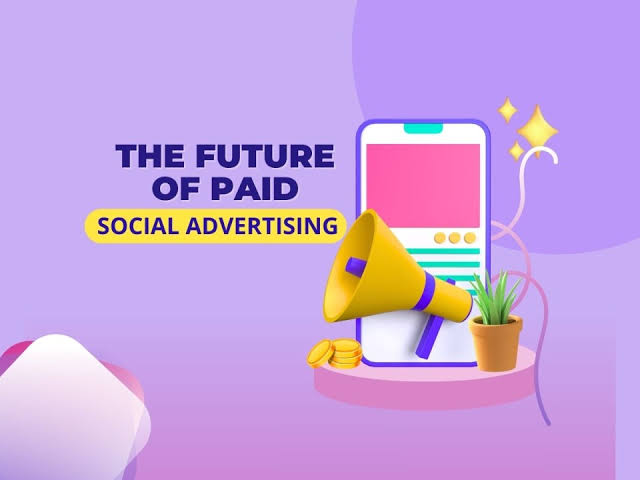
The future of paid advertising will likely be shaped by artificial intelligence (AI), machine learning, and deeper personalization. AI-driven algorithms are already being used to enhance targeting, optimize ad placements, and even create dynamic ad content tailored to individual users. Some anticipated trends include:
- Programmatic Advertising: Programmatic advertising uses AI to automate the buying of ad space. It enables precise targeting in real-time, ensuring ads are served to the most relevant audiences.
- Predictive Analytics: By analyzing past behavior, predictive analytics helps determine which users are most likely to engage with or purchase from a brand. This allows for more efficient allocation of ad budgets.
- Voice and Visual Search Advertising: As voice and visual search become more popular, advertisers are exploring ways to optimize ads for these formats, ensuring that their products and services are discoverable in new ways.
- Interactive and Immersive Ads: With technologies like augmented reality (AR) and virtual reality (VR), advertisers can create interactive ad experiences, allowing users to engage with products in a virtual space.
Paid Advertising Channels
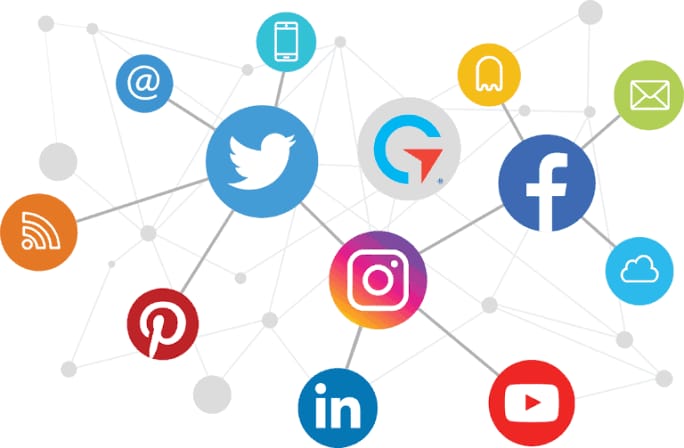
There are many online advertising channels out there but here is an overview of the main ones.
Google Ads
Google Ads, previously called AdWords, is the best known and longest standing advertising platform on the internet. Its sophisticated platform allows you to advertise on the Google search engine, YouTube as well as millions of websites and apps that are part of its network. Using machine learning and the data it collects on users, Google matches keywords and people with your ads and they’re quite good at it!
The platform mainly uses a Pay-Per-Click model based on how much you’re willing to bid and your quality score – how good your ads and landing pages are.
Microsoft Advertising
Microsoft Advertising, previously called Bing Ads, works in a very similar way to Google Ads. In fact, you can even import your ads from Google into Microsoft Advertising. Your ads can appear on Bing, Yahoo and MSN search results as well as other partner sites or platforms such as Cortana or Amazon devices.
The platform also uses a Pay-Per-Click model which combines your bid amount and quality score. The bids tend to be a bit cheaper than Google as it’s usually less used by advertisers. However, you should expect less volume than Google since Bing has a smaller market share but this can vary depending on the country and industry you’re targeting.
LinkedIn Ads
LinkedIn Ads offers advertising across its platform and is very much focused on professionals. You can target users based on their job title, the industry or company they work for or their interests, combined with geographic and demographic data. The platform mainly uses a Pay-Per-Click model.
Facebook Ads
Facebook Ads provides advertising capabilities on its platforms including Facebook, Messenger and Instagram. You can target users based on a lot of criteria such as their interests, the pages they like and even characteristics about their friends. As other platforms, they mainly use a Pay-Per-Click model based on real-time auctions.
Twitter Ads
Twitter Ads provides advertising capabilities within its platform. You can target people based on keywords, the conversations they take part in, their interests and whether they’ve engaged with your tweets in the past. They’re also based on an auction model with Pay-Per-Click charges.
eBay Advertising
eBay Advertising has a programme where you can bid to show on banner slots across the site based on keywords people are searching for or categories they’re visiting. They also use a Pay-Per-Click & auction model.
Conclusion
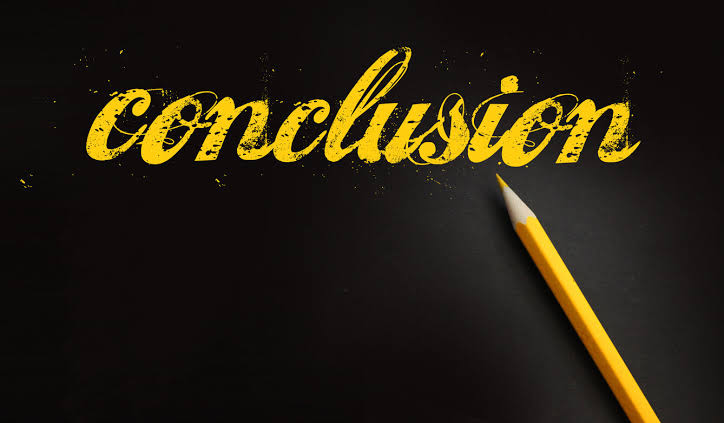
Paid advertising remains an essential strategy for businesses to increase visibility, generate leads, and drive sales. The shift from traditional to digital advertising has introduced new possibilities, allowing advertisers to reach audiences more precisely and measure performance in ways that were previously unimaginable. However, paid advertising requires a well-thought-out strategy, as the wrong approach can lead to wasted budget and alienated audiences. As technology continues to evolve, paid advertising will likely become even more personalized, data-driven, and effective. Businesses that adapt to these changes and leverage the power of analytics and AI will be well-positioned
